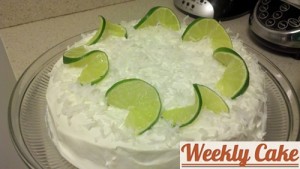 Two years ago I tried to make a Bûche de Noël and this is what happened. Isn’t this a sad, sad photo?
Two years ago I tried to make a Bûche de Noël and this is what happened. Isn’t this a sad, sad photo?
For those that don’t know, Bûche de Noël is a traditional French Christmas cake that resembles a yule log. They’re made out of a thin sheet cake rolled with frosting and decorated to look like rustic wood. I’ve recently seen cake pans shaped like yule logs so bakers can make a shortcut version of this traditional dessert. And to anyone that’s used one, consider yourself a cheater.
The allure of the Bûche de Noël started when I was 11 or 12. My dad was a partner at a store in a very chic neighborhood in Brooklyn. I worked weekends as a gift wrapper. One weekend the French bakery next door sent over a Bûche de Noël as a neighborly holiday gesture. It tasted… amazing.
The following year I asked my dad if he could pick up a Bûche for Christmas and he returned home empty-handed because they were going for $40, which was a lot to pay for a cake in the ’90s (in my opinion and clearly Dad’s too).

This is what a well-executed Bûche de Noël looks like. Photograph of a Bûche de Noël, by Andrew Pendleton
So I haven’t had a mere bite of Bûche de Noël since. Two years ago I attempted to make my own. I thought it would be easy and I was smart enough to do a trial run the weekend before Christmas. I even watched instructional YouTube videos. I baked the cake, made the buttercream, and even got the cake to successfully pop out of the jelly roll pan in one piece. Then I started to roll the cake and that’s when it started to crack and break and my dreams of baking a successful Bûche de Noël had crumbled.
In just a few weeks, once 2012 is upon us, I’m going to start baking a cake a week. And hopefully by this time next year, I’ll be brave and skilled enough to attempt another Bûche de Noël.
A version of this post originally appeared on my personal blog: NinaSpezz.com.
 You’ve heard the phrase, “Baking is a science;” it’s true. Just know that baking soda and baking powder are not the same thing. You can make any recipe your own by tweaking certain ingredients to your taste, so long as you maintain certain wet to dry ratios and observe measurements.
You’ve heard the phrase, “Baking is a science;” it’s true. Just know that baking soda and baking powder are not the same thing. You can make any recipe your own by tweaking certain ingredients to your taste, so long as you maintain certain wet to dry ratios and observe measurements.




 Two years ago I tried to make a Bûche de Noël and this is what happened. Isn’t this a sad, sad photo?
Two years ago I tried to make a Bûche de Noël and this is what happened. Isn’t this a sad, sad photo?
